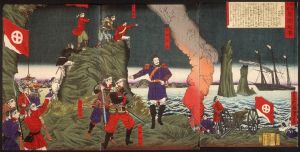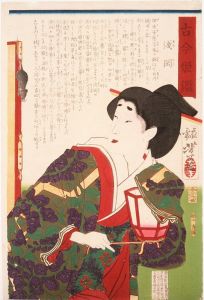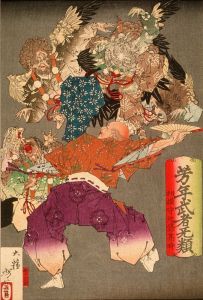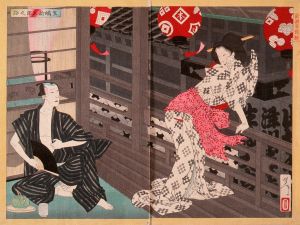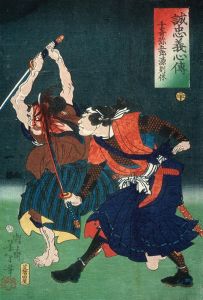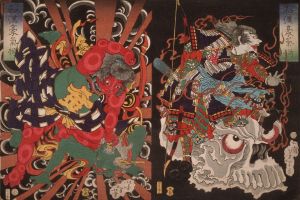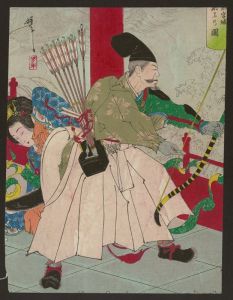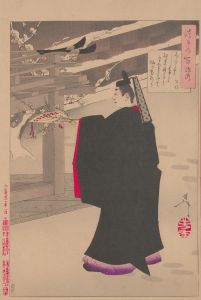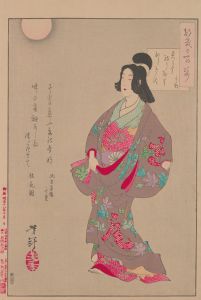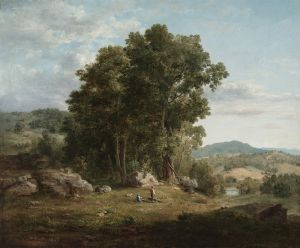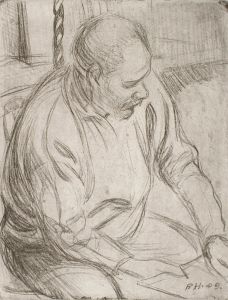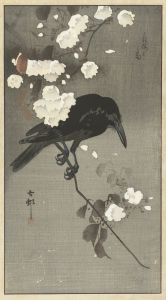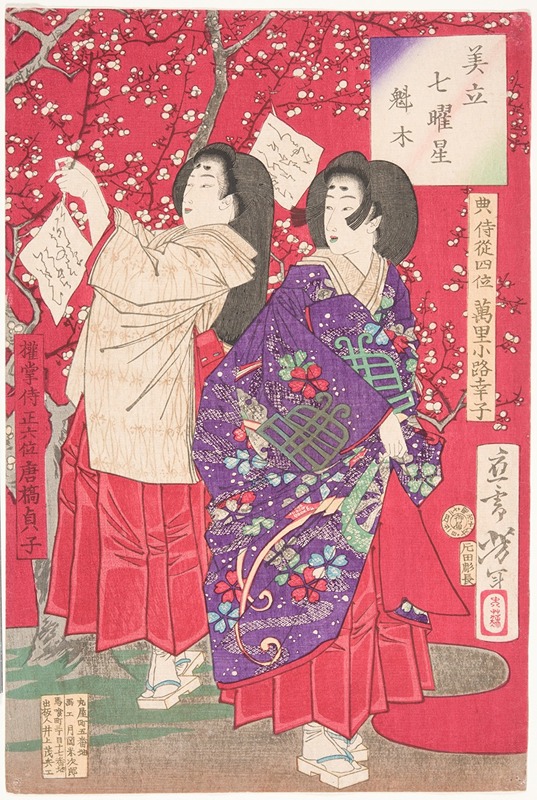
Wood for the Plum Tree
A hand-painted replica of Tsukioka Yoshitoshi’s masterpiece Wood for the Plum Tree, meticulously crafted by professional artists to capture the true essence of the original. Each piece is created with museum-quality canvas and rare mineral pigments, carefully painted by experienced artists with delicate brushstrokes and rich, layered colors to perfectly recreate the texture of the original artwork. Unlike machine-printed reproductions, this hand-painted version brings the painting to life, infused with the artist’s emotions and skill in every stroke. Whether for personal collection or home decoration, it instantly elevates the artistic atmosphere of any space.
"Wood for the Plum Tree" is a woodblock print created by the renowned Japanese artist Tsukioka Yoshitoshi (1839–1892), one of the last great masters of the ukiyo-e tradition. Yoshitoshi is celebrated for his innovative approach to woodblock printing during a time when the art form was in decline due to the increasing influence of Western art and technology in Japan. His works are noted for their dramatic compositions, vivid use of color, and psychological depth.
This particular print, "Wood for the Plum Tree," is part of Yoshitoshi's acclaimed series One Hundred Aspects of the Moon (Tsuki hyakushi), which was published between 1885 and 1892. The series consists of 100 individual woodblock prints, each inspired by Japanese history, folklore, literature, or legends, with the unifying theme of the moon. The series is widely regarded as one of Yoshitoshi's masterpieces and a significant contribution to the ukiyo-e tradition.
"Wood for the Plum Tree" depicts a scene from Japanese folklore or history, though the specific narrative or character associated with this print is not definitively documented in available sources. Like many of Yoshitoshi's works, the print combines elements of natural beauty, human emotion, and storytelling. The title suggests a connection to the plum tree, a symbol of resilience and renewal in Japanese culture, often associated with the arrival of spring. The inclusion of "wood" in the title may imply an act of preparation or care, though the exact interpretation remains tied to the context of the series and the viewer's perspective.
Yoshitoshi's One Hundred Aspects of the Moon series was created during the Meiji era (1868–1912), a period of rapid modernization and cultural transformation in Japan. Despite the challenges faced by traditional woodblock printing during this time, Yoshitoshi's work demonstrated the enduring appeal and adaptability of the ukiyo-e style. His prints often reflect a blend of traditional Japanese aesthetics and the influences of the changing world around him.
As with many of Yoshitoshi's works, "Wood for the Plum Tree" showcases his technical mastery and ability to evoke emotion through intricate line work, dynamic composition, and a harmonious balance of color. The print is a testament to Yoshitoshi's dedication to preserving and revitalizing the ukiyo-e tradition in the face of modernization.
Further details about the specific narrative or historical context of "Wood for the Plum Tree" are not readily available in existing records.





